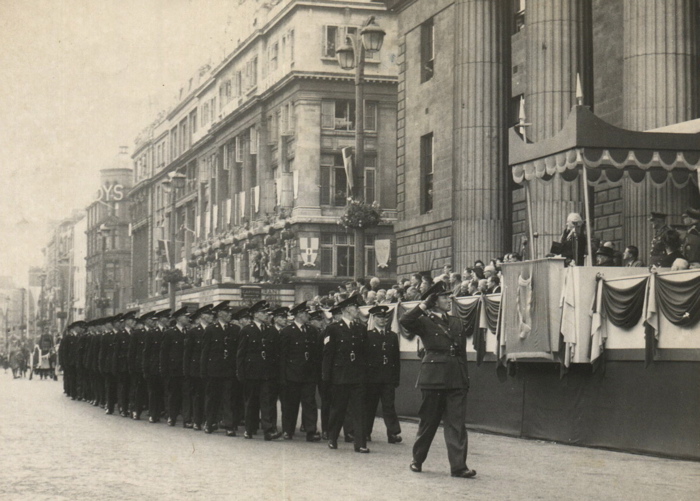Irish Legal Heritage: The Civic Guard and An Garda Síochána

An Garda Síochána recruits outside the General Post Office 1954
Source: Alison Cassidy Family Collection (GNU Free Documentation License)
After the Anglo-Irish Treaty was signed on 6 December 1921, the Provisional Government began the process of disbanding the Royal Irish Constabulary. In February 1922, Michael Collins began to recruit for the Civic Guard, which would later be named An Garda Síochána – “the guardian of the peace”.
Public hostility towards the Royal Irish Constabulary called for the new police force to be distinct from its perceived predecessor, which was at least part of the reason why the force was unarmed. Michael Staines, an Irish Republican who had been elected as a Sinn Fein MP in the 1918 General Election and was a member of the First Dáil, was the first Commissioner of the Civic Guard. He famously declared that “the Garda Síochána will succeed not by force of arms or numbers but on their moral authority as servants of the people” (Paul O’Mahony, Criminal Justice in Ireland).
Another reason proffered for leaving the Guards unarmed was to ensure that those who opposed the Anglo-Irish Treaty “could not credibly include the Civic Guard in its list of legitimate targets during the civil war” (Paul O’Mahony, Criminal Justice in Ireland). For the most part, this was true – the only member to “find himself on the wrong end of an IRA bullet” during the Irish Civil War was Garda Henry Phelan, who was on his way “to buy a sliotar” when he was shot dead in November 1922 (Colm Wallace, The Gardaí in the 1920s – A Troubled Beginning).
Seosamh Gráinséir









